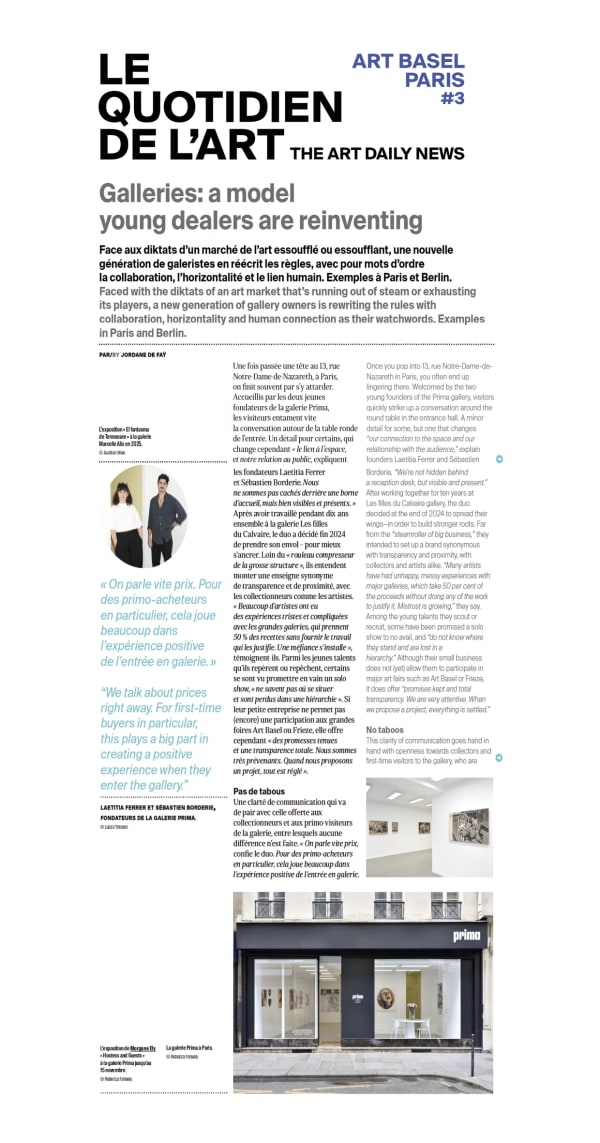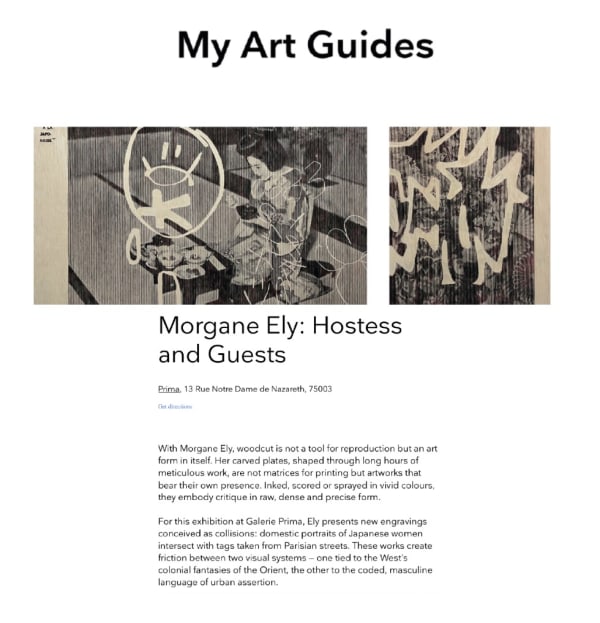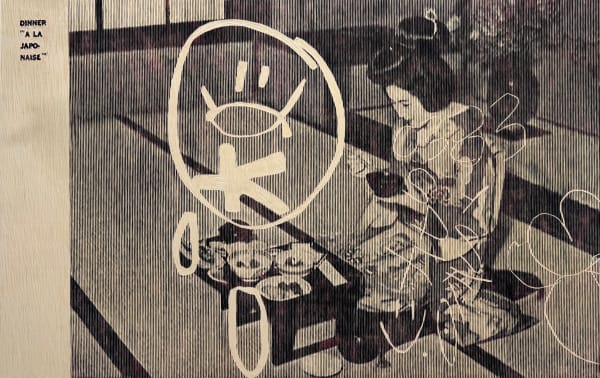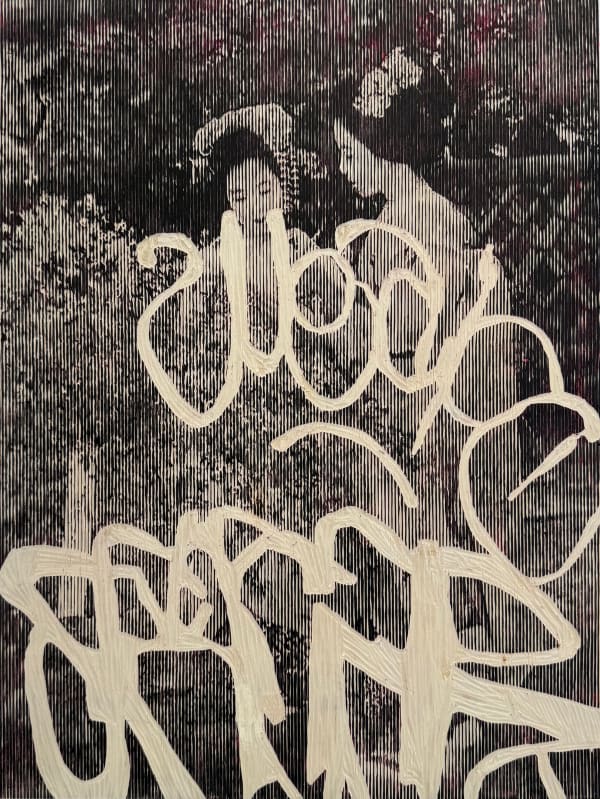MORGANE ELY: HOSTESS AND GUESTS
OPENING THURSDAY, OCTOBER 9, 6PM
With Morgane Ely, woodcut is not a means to reproduce images, it is a way to embody them. The carved plates, shaped over long hours of meticulous work, are not tools but artworks in their own right. No prints here. What’s shown are the matrices themselves: inked, scored, sometimes sprayed in acid-bright colors. Each piece seems to earn its own presence, raw, dense, and precise — a critique made material.
For this solo exhibition at Galerie Prima, Ely presents a new series of engravings conceived as collisions: domestic, near-frozen portraits of Japanese women meeting tags lifted from the streets of Paris. Each work creates friction between two visual systems — one shaped by a long colonial legacy of Orientalist fantasy, the other by a coded, masculine urban language of assertion and presence.
The women depicted, poised in domestic settings, recall the stereotypes constructed by the West: submissive, silent, overly aestheticized. These images — found on fans, porcelain, or in archival photos — never really left the collective imagination. Ely doesn’t reenact them, she questions them. Over these polished surfaces, she lays a different kind of mark: the tag. A gesture of ego, of territory, historically masculine, used to dominate public space, often at the expense of marginalized bodies.
What unfolds is not just juxtaposition, but displacement. The tag becomes both intrusion and reinterpretation. It scratches, pollutes, reawakens these frozen images. It stops the eye from settling, forces us to look differently, and perhaps to hear the political tensions embedded in the aesthetic. Ely, as always, works through paradox: refinement and transgression, technical precision and popular culture, traditional craft and critical détournement.
In her hands, femininity is never a category to tick off, nor a fixed posture. It is a terrain of conflict, of reappropriation, and sometimes of irony. In this new body of work, the clash between the intimate and the urban, between the fantasized object and the visual attack, becomes a form of resistance — a way of letting images be complex, impure, and fully alive.
-

Expositions à voir pendant Paris Photo
Morgane Ely à la galerie PrimaMatthieu Jacquet et Camille Bois-Martin., Numéro Art, November 12, 2025 -

Que faire, que voir, où aller ?
Morgane Ely / Hostess and GuestsMarie Anne Bruschi, Le Monde, November 1, 2025 -

Galleries : a model young dealers are reinventing
Jordane de Faÿ, Quotidien de l'art, October 22, 2025 -

Geisha girl
Morgane ElyMathilde Delli, Technikart, October 10, 2025 -

Morgane Ely : Hostess and Guests
My Art Guide, September 22, 2025








